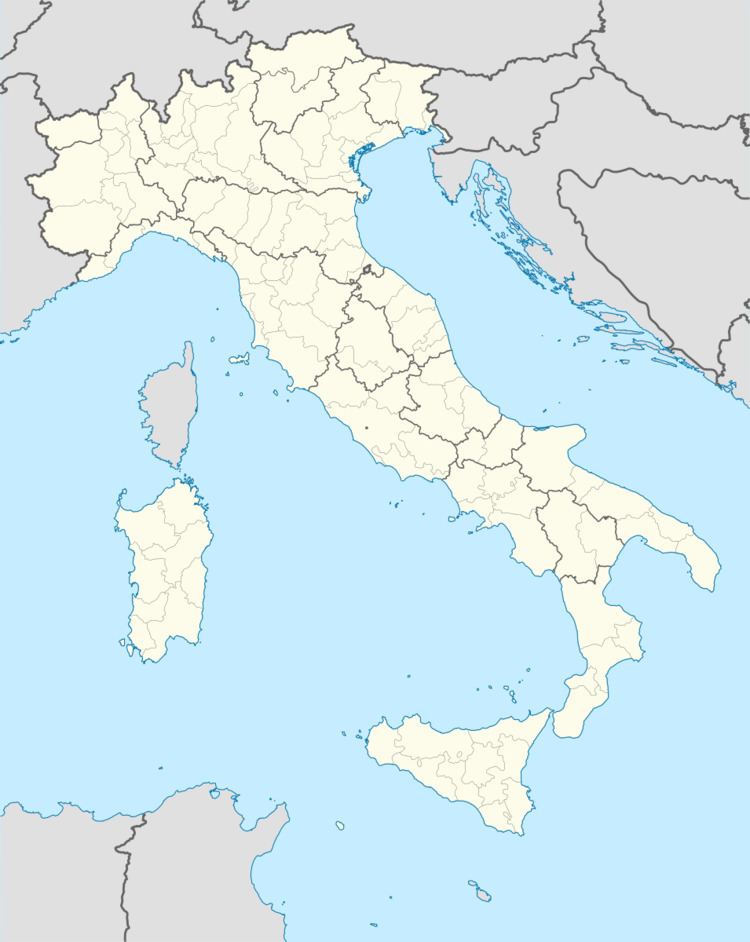Country Italy Province / Metropolitan city Bari (BA) Demonym(s) Casamassimesi Area 77 km² Postal code 70010 Patron saint Saint Roch | Region Apulia Elevation 223 m (732 ft) Time zone CET (UTC+1) Local time Monday 12:57 AM Province Province of Bari Dialling code 080 | |
 | ||
Weather 9°C, Wind SW at 8 km/h, 73% Humidity | ||
Casamassima is a town and comune in the province of Bari, in Apulia, southern Italy.
Contents
- Map of 70010 Casamassima Metropolitan City of Bari Italy
- History
- Origin of the villages name
- Timeline of the towns history
- Notable landmarks
- References
Map of 70010 Casamassima, Metropolitan City of Bari, Italy
The town is located inland from the Italian coastline, thrives and is built on agriculture, primarily that of wine, olives and almond production.
Casamassima can be found in the Bari Province of the Apulian region in the Southern Zone of Italy. Only 223 metres (732 ft) above sea level from the Adriatic Sea, and consisting of a population of approximately 16,388 (equating to about 211.7 people per square kilometer), this township is located on one of the eastern terraces of the Murge. The Murge is a characteristic area of Apulia that is composed of limestone hills, near the edge of the Bari basin (conca di Bari—A depression formed when the underlying limestone is eroded by underground water and collapses).
The settlement is connected with the Bari-Putignano railroad line and the Bari-Gioia Del Colle-Taranto highway.
History
This settlement is rich in culture and labor from its agricultural industry and the delectable Italian ambiance, all due in part from its citizens. Also, this town has a rich history of how it came into existence – a captivating story in itself, from acquiring its namesake to legendary origins to factual possession.
Up until about the end of the 10th century, the existence and history of this Italian village could not be documented, at least not until 962 AD, during the occupation of Bisanzio. However, the origins of the town are known to go back to the 7th, 8th, & 9th centuries during the Longobard occupation.
Completely humiliated by the emperor Frederico II who had taken Casamassima during the feud led by the Normans, the emperor Enrico VI granted the township to the Massimi family in 1195. Once the feuding ended, and the Massimi Family obtained possession, the Italian village was returned to its rightful owners in 1254 by the emperor Corrado IV.
After the Hungarian attack in 1348 the town was under numerous ownerships and at the mercy of many dominant leaders until 1806 when the king of Naples, Giuseppe Bonaparte, abolished all feudalism in the kingdom. Due in part to all the fighting and changing of ownership this municipality has benefited most fittingly from its ecclesiastical shortcomings into a city dominated by a robust middle class that has an economy primarily based in the agricultural industry. However, during the 20th century the township entered a period of complete urban expansion with population growth starting in the early 20th century until now, most notably favoring a return to the administrative life of the social classes.
During the 2nd world war, 431 Polish soldiers died in 1944 and were buried in the Polish Cemetery in Casamassima.
Origin of the village's name
The story dates back to Fifth Fabio Massimo (3rd century BC) who had built a camp in this part of the country during the war against Hannibal (Annibale) — enabling the name “camp Maximi” (camp of Massimo) to be pronounced – which in time turned into the namesake of Casamaxima.
However, a more accurate recording of its namesake happened in the year 1195 when the town was granted to the Massimi or Massimo family by the emperor Enrico VI – on one condition, that the family was expected to change their surname to “Casamassima”.
Timeline of the town's history
Notable landmarks
"It is still alive in our memory, and more still in our soul, the sonorous and melodious tone of the mystical bell of the historical bell tower of the Mother Church that, punctually, each morning, at the hour of five, provided for waking up all the citizens and, with the good morning not always accepted with good wishes, they ordered all the citizens to get up and go cultivate the earth and pick up the fruits of her results."
The painting contains the Madonna with an important crown upon her head, dressed in a clear tunic with a blue sash also covering her head. She is supporting the Child with both arms while He caresses the face of his Mother with his right hand all the while supporting a calm bird on the index finger of his left hand.
At the sides of the Virgin's head are two angel heads with inconspicuous figures dressed in monastic habits, which sadly, the angel on the right is almost irrecoverable.
